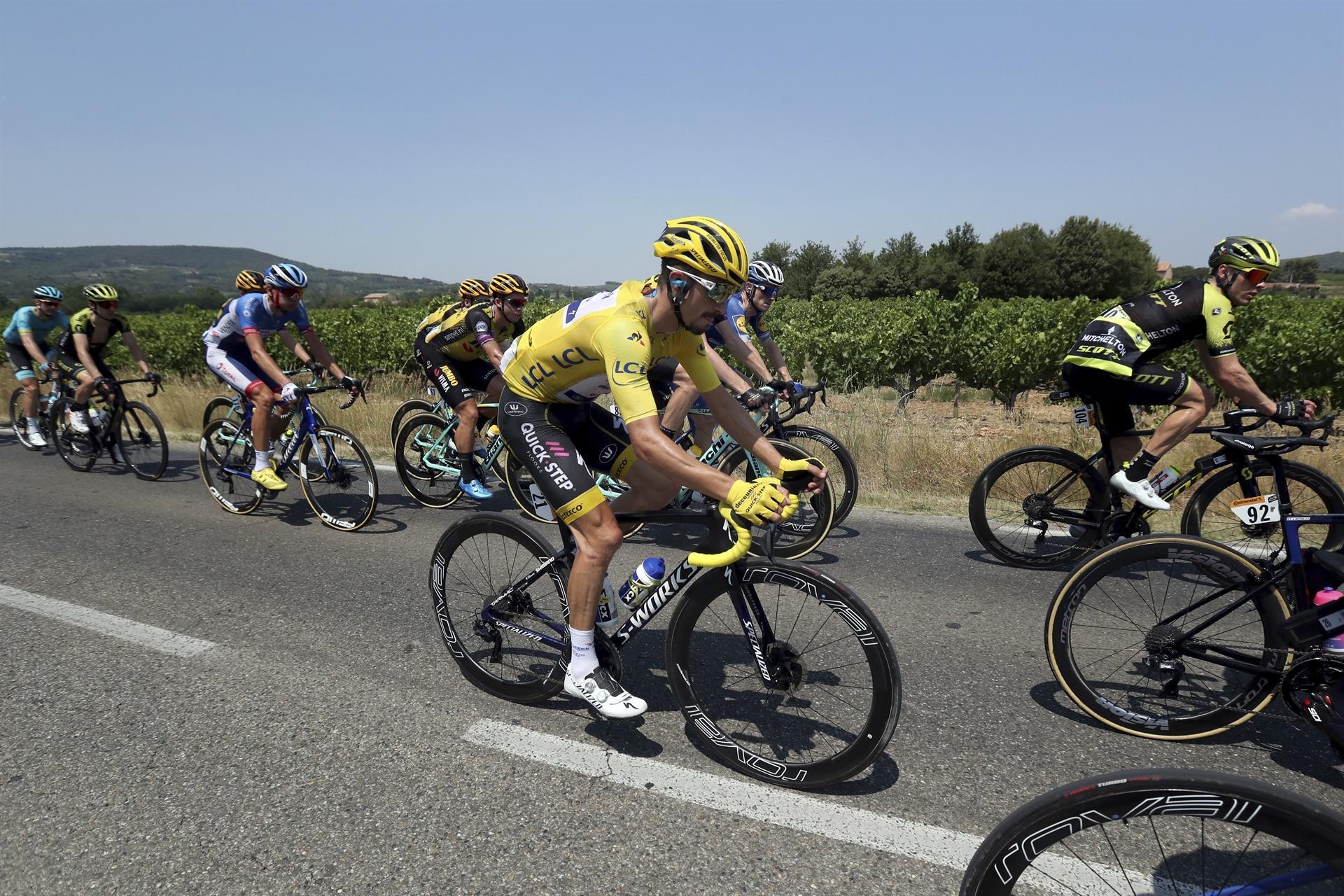
Tour de France leader Julian Alaphilippe is one of a clique of daring cyclists using a dangerous downhill crouch to gain extra speed and leave more nervous rivals trailing.
The daredevil Alaphilippe is far from the first rider to draw gasps from fans with Marco Pantani's swashbuckling crouch in the 1990s and Chris Froome's nerve-tingling forwards crouch from 2016 setting precedents.
Alaphilippe clutches the very tips of his handlebars, sticks his chin over the front and moves his behind off the saddle to sit on the frame of the bike, as he did coming down hill in the Champagne region to clinch the yellow jersey.
The Frenchman used the move to stunning effect on stage three when he used his trademark kick to chase bonus seconds atop a climb at 15 kilometers from the finish line at Epernay.
He clinched five seconds on the smallish Cote de Mutigny hill, but then charged downhill using his tuck, took another 10-second bonus at the finish line after a heroic effort for the stage win.
He came in 26 seconds ahead of the pack, with defending champion Geraint Thomas another five seconds behind.
A virtuoso downhill racer with nerves of steel, Alaphilippe uses the tuck position to pick up speed before getting back onto the saddle and kicking into the pedals, but most riders don't dare.
"I've no idea where it came from or who started it," Ireland's Dan Martin told the Cycling Weekly website.
The UAE Emirates captain is on record as saying he is more security conscious since the birth of his twins.
"When guys are on their own, fair enough, but in the peloton, it's just dangerous," says Martin.
Winner of three breakaway Tour de France stages, Sandy Casar told AFP he was divided on the issue.
"It works because aerodynamics are better, because you take less wind. And because you are leaning forwards, you pick up speed," he explains.
"But it's dangerous, look at Philippe Gilbert's fall last year. You have less control and because of the position your muscles are less relaxed."
Gilbert, a teammate of Alaphilippe, had been using a crouch going into a corner that he took too wide.
He survived that corner but went over a verge on the next one.
"But for me, it works," insists Casar.
The University of Lige, in the city where the Liege-Bastogne-Liege race is run, has even been conducting research into the tactic.
They use a wind tunnel lab where researchers and engineers are studying the aerodynamics of professional cyclists' bicycle positions.
Former champion Froome's celebrated descent of the Pyrenean Col du Peyresourde on the eighth stage of the 2016 Tour caused a sensation as the Briton went on to win his third Tour de France.
According to studies at the Sart Tilman campus, it gave him a “9 percent” advantage over a classic position.
While the one Alaphilippe uses is 12 to 17 percent faster, their study claims.
It also offers better security than Froome's position because of a more even body weight distribution over the wheels of the bike.
Should Alaphilippe hold on to his lead and become the first Frenchman since Bernard Hinault to win the Tour since 1985, the tuck will have played its part, and even if not the daring and the flair have won him fans all over the world.